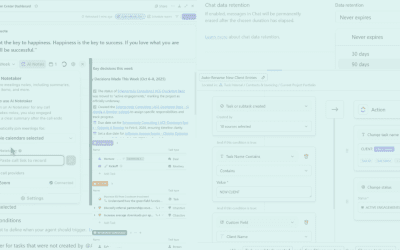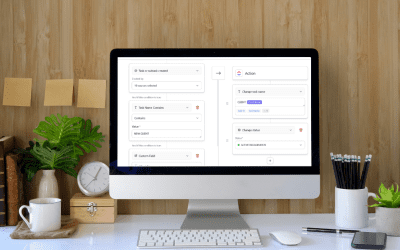
Summary: One of the largest time bound and financial burdens the healthcare industry deals with is administrative burden. Between processing hundreds of claims, keeping members engaged and educated, handling prior auths, AND maintaining compliance…healthcare operations is far from simple.
Our veteran PMs have witnesesd firsthand how automation and artificial intelligence (AI) can create transformative efficiency. Paired with the right project management expertise, AI and automations become less intimidating and more exciting.
The Administrative Challenge in Healthcare Payer Organizations
Healthcare payers are often buried under the complexity that accompanies their administrative work. We’re talking:
- Manual workflows
- Data systems that don’t talk to one another
- Outdated hardware and systems
- Compliance requirements that are constantly changing
So how do healthcare payers keep operational costs down without slowing down execution on these key activities?
Why AI and Automation Are the Answer. But Not the Whole Answer.
It’s tempting to see AI and automation as silver bullets for administrative waste. And in some ways, they are.
- AI can review insurance claims much faster than the average human and be trained to flag issues.
- Machine learning models can flag fraudulent activity or predict member churn.
- Automated workflows can streamline prior authorizations, eligibility checks, and data reconciliation.
So, how would a healthcare payer org implement this? It’s not as simple as setting up an automation, or purchasing an AI product, and pressing “Go”.
To do this successfully, and in a way that doesn’t interrupt daily operations, it requires:
- Clarity around current workflows – who is impacted and who is responsible for each piece.
- Identifying technical dependencies and technical debt that may require additional planning for an integration.
- Ensuring the technology you want to implement is actually going to help — and not hurt, your organization.
This is where project managers can “save the day”. When a trained PM assists with this type of technology integration, they’re going to take care of:
- Stakeholder Alignment: ensuring all departments are aware of what will change, when it will happen, and their role in it. And then keeping them updated every step of the way.
- Getting everyone on the same page: internal buy-in is key. A good project manager helps internal teams stay on the same page and encourages support from leadership.
- Post integration adoption: What good is a shiny new tool if no one uses it? A good project manager is also well versed in the principles of change management and can assist in developing plans for staff training, rollouts, and adoption metrics to minimize disruption.
- Adherence to regulatory compliance: Working with project managers who are familiar with healthcare is extremely beneficial with ensuring new tools and procedures adhere to HIPAA or CMS standards to avoid costly rework and legal implications.
The Role of Specialized Project Management
Healthcare payers are working within one of the most heavily regulated, complex sectors of our economy. Having a specialized project manager, or one familiar with the healthcare industry, is essential to a cost-efficient, successful technology implementation. A generalist PM is more likely to overlook the importance of certain compliance regulations, have difficulty prioritizing the multiple stakeholder groups involved with healthcare orgs, and need more time to get up to speed on healthcare systems and processes.
A project manager who specializes in healthcare understands how to properly sequence an implementation, secure executive buy-in, manage scope creep, and meet quality standards on outcomes.
Integration Isn’t Just Technical—It’s Organizational.
For good reason, healthcare orgs often underestimate integrations as being a technical undertaking. And from reading this article, you likely agree that it sounds highly technical.
While the act of integration itself is technical, the success of an integration depends on:
- Business process mapping: for automations to work efficiently, everyone must understand each step in the process and eliminate inefficiencies.
- Change management: to ensure that once the implementation is completed, healthcare payers are using the integration as intended.
- Cross-functional coordination: integrations don’t only for payers. It impacts customer service, IT, compliance, and more.
AI as a Strategic Differentiator
If healthcare payers want to remain competitive in today’s landscape, AI is tablestakes. But adopting it effectively means treating it not as a tool, but as a transformation.
A successful transformation is not something done by plugging in a tool and turning it on. It depends on a thoughtful execution strategy led by an experienced, well-organized, and specialized project manager.
If you’re looking to reduce administrative burden, Tuck Consulting Group is here to help.


